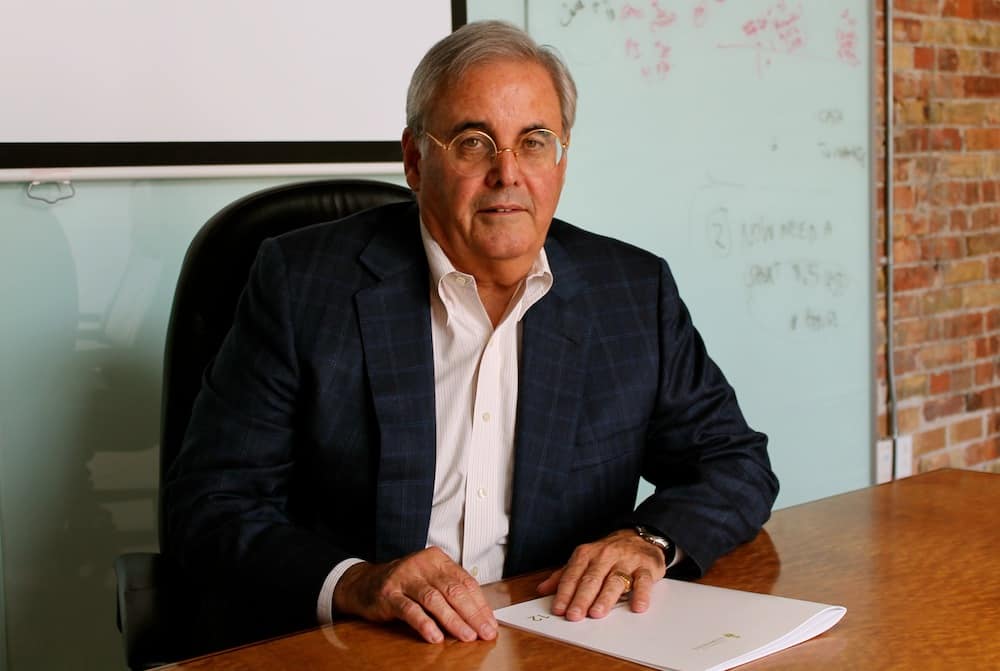For more than a decade, U of T’s endowment and pension funds have been managed by the University of Toronto Asset Management Corporation (UTAM). From January 1 to June 30 2013, the portion of U of T’s endowment for long-term investment returned 5.89 per cent, with the total now sitting at just over $1.9 billion.
UTAM was incorporated in 2000 to pursue a more active style of managing U of T’s funds, including its endowment and pension plan. The university contracted the organization in the hopes of securing greater returns from its investments than it did from the committee of volunteers that preceded UTAM.
“We don’t actually manage that money internally,” explained William Moriarty, president and CEO of UTAM. “What we do is we work with the university to create a portfolio asset mix that is designed to meet their objectives in terms of return objectives, in terms of risk appetite, in terms of time-frame.” After the university agrees on this reference portfolio — generally a collection of low-risk, easily managed investments — the corporation proceeds to create an actual portfolio, which investors sometimes drily refer to as the “better portfolio,” to attempt to outperform the reference. UTAM then searches for and contracts investment managers to run segments of the portfolio, depending on their expertise. “In that sense we’re a manager of managers, or a fund of funds,” Moriarty noted.
The CEO used UTAM’s approach to Canadian equities (assets minus debt, or simply, stocks) as an example. “We essentially said ‘Which segment of the market has the greatest number of companies and the greatest dispersion of returns?’ When you go through that and you look at the marketplace, the answer to that is natural resources, so if you can find an expert who really knows the natural resource space, then you should be able to add extra value into the portfolio.” With this in mind, UTAM went on to contract AGF Management Limited, a specialist in the industry. Though UTAM still monitors its performance, it now leaves investment decisions for a portion of U of T’s assets to AGF.
Assessments of the corporation’s performance to date have been mixed. The University of Toronto Faculty Association (UTFA), whose pension fund UTAM manages, disapproves of the university risking losing money in the attempt to beat the market. “UTAM thinks that by actively managing our funds, by picking the right stocks, the right investments, they can beat the returns of similar passive investment portfolios by, say, half a percentage point every year after cost,” stated Ettore Damiano, economics professor and member of the UTFA’s Salary, Benefits, and Pensions Committee. “Maybe it’s possible, but it’s very hard because the cost structure of active management is very high. UTAM spends about 1.4 per cent of our assets every year in expenses.” In order to make that additional half a percentage point in returns, he concluded, UTAM would have to make almost two per cent more per year before costs than a passive, low-management index fund — a difficult task in the relatively efficient North American equities market.
Nonetheless, UTAM’s performance of late has been promising. In the past four-year period, the Long Term Capital Appreciation Pool (LTCAP) has returned 8.42 per cent (0.92 per cent more than the reference portfolio, all figures after costs), while the pension fund has returned 8.38 per cent (0.87 per cent more than the reference). “That’s an extra, potentially, fifty-odd million dollars each year to the university, net of all costs,” said Moriarty. “So I would say over the last four years, touch wood, we’ve been reasonably successful.” This is a welcome sign, as the university — like much of the world — is still reeling from the effects of the 2008 financial crisis, during which the university experienced a 29.4 per cent loss of the LTCAP and 29.5 per cent of its pension fund. UTAM will need to continue to perform similarly if U of T is to fully recover its 2008 losses.
“I think we’re gratified with the support that the university administration has given us to actually build what we have today, because I think we have a much more experienced staff than existed here five years ago,” Moriarty said by way of conclusion “We have an incredible suite of analytics and infrastructure that we’ve built. We have a much more sophisticated risk-management system than anything that existed here previously.”
Both Moriarty and Damiano emphasized that gauging the success of investment managers is complicated, because their work is characterized by periods of triumph and periods of failure. Any manager can look either brilliant or incompetent, depending on the years evaluated. That said, it is in the university’s best interest that Moriarty and UTAM are brilliant for a little while — much of the University of Toronto’s fortune rests on the their success.


